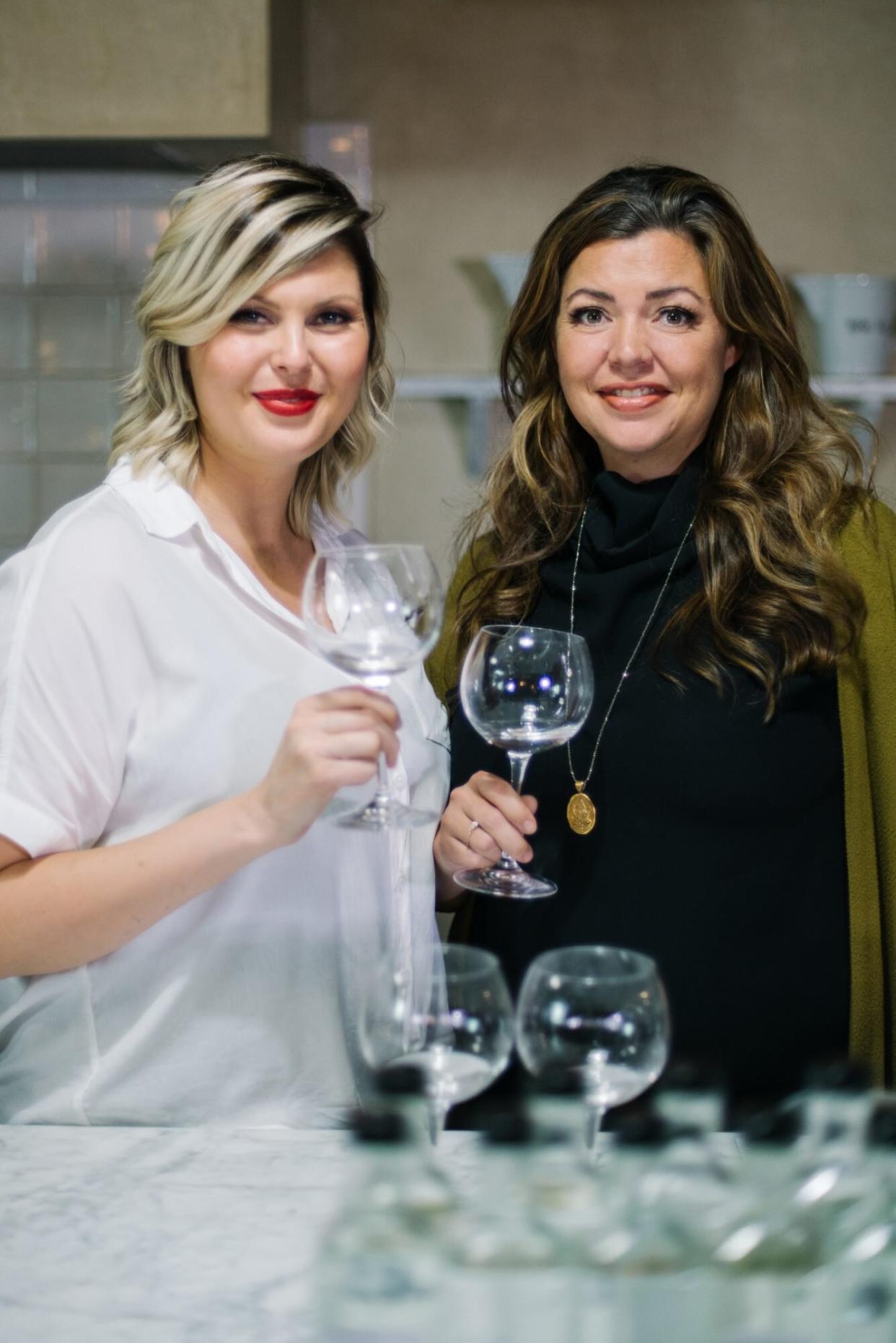Making the Best of 2020: How a Distiller and a Winemaker Turned Adversity Into a Golden Opportunity

Jillian Mitchel
For Lindsay Hoopes, second-generation owner of the family-run Hoopes Vineyard in Napa Valley, California, necessity was, without question, the mother of invention. Taking the reins from her father, Spencer Hoopes, in 2012 allowed her to put her own fingerprint on the business of grape growing and wine production. Then, in 2017, and again in 2020, the Napa wildfires ravaged the vines and scorched the grapes. Like other vineyards in the world-famous area, Hoopes Vineyard proved vulnerable to the whims of nature.
When the 2017 fires hit in the middle of the harvesting season, Hoopes' team got the grapes off the vines as quickly as they could, not yet sure what impact the smoke would have on the crop. "Lo and behold, in December 2018, we noticed that it was showing signs of smoke taint," Hoopes recalls. "It was a difficult thing to test for. What seemed fine at first became an ashtray, with light levels of ash."
Related: Meet the Women who Are Changing Wine in Bordeaux
A Revolutionary Resolution
As Hoopes started investigating solutions, she encountered roadblocks at every turn. They couldn't sell the grapes in bulk for less-expensive wine, nor would insurance cover the calamity since the crop had already been harvested. "I thought that we had hit rock bottom. I had taken over a 40-year-old business. I felt responsible. How could I push through and keep the family together?"
The answer took shape when Hoopes met Marianne Barnes at an industry book event. Something of a pioneer in the spirits field, Barnes held distinguished credentials as Kentucky's first female master distiller since the days of Prohibition. Armed with a chemical engineering degree and a talent for tasting, she'd risen through the ranks of Brown-Forman, then Castle & Key, Kentucky's venerated spirits distilleries. Creative sparks flew, and by 2019, Hoopes and Barnes started collaborating and experimenting, ultimately distilling Hoopes' wine, made from smoke-tainted ultra-premium grapes, into something else entirely: spirits from a winemaker's perspective. It was a totally new product category. "Even though it came out of sad phenomena, we created something super delicious," says Barnes.
American Brandy, Vermouth, and More
Keeping the cabernet sauvignon, chardonnay, and rosé varietals distinct, they played with different spirits for each. The cabernet is used for a Cognac-style brandy, possibly the first of its kind. "The cabernet is special," says Barnes. "We're looking to be trailblazers in this."
Delving into the state's history, they discovered that California's missions had produced brandy, but not from high-premium grapes. And that gave them pause. "Why was there no ultra-premium analog of a Cognac out there?" says Hoopes. Because the grapes going into the still were of better quality, the resulting spirits exceeded expectations. "Cabernet is called the 'king of wine grapes' for a reason," says Hoopes. "It has more body than white grapes and other reds. We'll see the 'wow' factor in the distilling." And since it can only be called Cognac if it hails from Cognac, France, they're brainstorming other names for their Napa-designated brandy.
Its taste also belies the vineyard's odyssey. "There's a hint of smoke, not a firebomb—a light expression of smoke," says Hoopes. The spirits have a beautiful, natural expression that's likely to change over time, explains Barnes. "We'll be able to balance out the smokiness with aging," she says. "It's not peat smoke, like a scotch—it has its own characteristics. Every year the properties of the wine will change."
The rosé, it seems, is also brandy bound, but it leans in a different direction. "It retains that fruity, floral essence of rosé, that sweet feeling. It reads clearly as a rosé," says Barnes. And it has other applications, too: some of the unaged rosé will be blended into vermouth. And the chardonnay, they determined, is better suited for gin or infused spirits.
A Beacon of Hope
When might their pioneering spirits be ready to taste? At this point, Hoopes and Barnes are looking at the end of 2021. And they anticipate that the product line will be branded as its own entity, and initially available in the Hoopes Vineyard tasting room. It's a long way from 2017, and even the wildfires of 2020.
Catching word of their unprecedented undertaking, some members of the impacted Napa community have reached out to Hoopes for advice. Her story, she says, has been a bright light. Still, she reveals, it isn't easy to pivot from wine to spirits. And it's certainly not turnkey. It all takes time. That said, perseverance has its rewards. "Our team was forged in fire," Hoopes says. "Two women in traditionally male-dominated roles came up with a solution to a problem. Two women together, making something beautiful, something revolutionary, that felt like hope in the true sense of hope."

